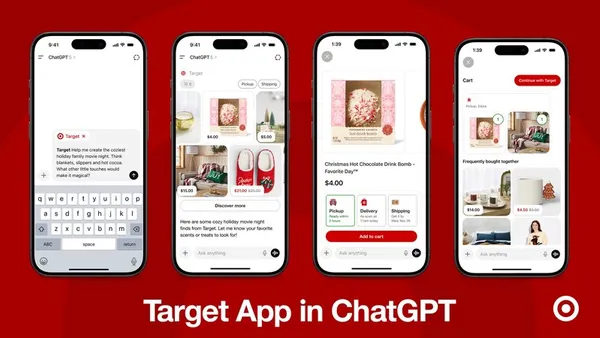Brief:
- TikTok is preparing to offer an augmented reality (AR) ad format that would compete more directly with Snapchat lenses that are a key feature of photo-messaging app. The AR brand effect ad will let TikTok users create videos with visual effects from sponsors, Digiday reported, citing people familiar with the plans.
- The AR effects will interact with the surrounding physical environment seen through a smartphone camera, giving brands a way to integrate their digital imagery in user-created videos. For example, a carmaker could have branded AR content that shows a vehicle racing along a kitchen table, or advertiser's mascot could appear in videos, Digiday reported.
- The AR ads will let viewers see more information by tapping on their smartphone screens, and will have music soundtracks that TikTok users can add to their videos. The ad format may have a different name by the time it rolls out, which is expected to take place worldwide in Q3, Digiday reported.
Insight:
TikTok's reported plans for an AR ad format would give mobile marketers a way to make their ad creative more immersive on the social video app and points to the technology's broadening appeal with consumers, marketers and digital platforms.
The new ad format takes aim at rival Snapchat, whose parent company Snap has said that more than 75% of users engage with AR content every day on average in the photo-messaging app. AR content is appealing to advertisers because it urges social media users to prolong their exposure to a branded experience, helping Snachat's offering attract big brands like L'Oreal and Universal Pictures looking to engage consumers even while they practice social distancing during the coronavirus health crisis. The content also urges people to share the content with their friends and followers, helping to extend the reach of their social media campaigns.
The development of AR brand effects follows TikTok's release last year of an ad format called "branded effect" that let marketers create ads with 2D effects that users could add to their videos. TikTok's in-house development team created the ads, which cost about $100,000 last year, Digiday reported. The pricing for the AR brand effects remains to be seen, but may follow the same trajectory as at Snapchat. The company used to charge $500,000 for an AR lens that appeared throughout the U.S., making the format too expensive for many advertisers. The price of sponsored lenses declined after Snapchat added the format to its programmatic auctions that have cost per mille (CPM) rates, Digiday reported.
TikTok's plans for AR brand effects ads follow this month's test of an ad format with a call-to-action (CTA) button that links marketers to social influencers on the video app. The ads were made available to a small group of advertisers and agencies during the pilot program. TikTok hasn't set the terms for revenue-sharing with creators, and is weighing plans to give creators 20% of ad sales. The app has had several initiatives to blend influencer content with commerce as consumers become more comfortable shopping on their phones. Apparel brand Levi's this month touted a test of "Shop Now" buttons that let consumers buy products shown in TikTok videos, TechCrunch reported. Last year, TikTok introduced a Creator Marketplace to connect brands with influencers and started running beta tests that let creators embed links to product pages in their videos.
TikTok's development of AR brand effects is likely to heighten its rivalry with Snapchat parent Snap, even though TikTok is the biggest advertiser on the photo-messaging app, a study found in March. Snap CEO Evan Spiegel has downplayed the rivalry, going so far as to describe TikTok as a "friend" in a conference call with analysts to discuss Q3 results last year. More recently, Spiegel described TikTok as a bigger threat to Instagram, the popular photo-sharing app owned by Facebook that was estimated to have more than 1 billion monthly users last year. However, TikTok was estimated to have surpassed 2 billion lifetime downloads worldwide in Q1, according to researcher Sensor Tower, making the app possible more popular than Instagram.
Snapchat, whose user base expanded by 11 million to 229 million in Q1, has continued to innovate and developed a variety of ad formats to appeal to a broader group of marketers. Snap in March released Lens Web Builder, a software tool to help marketers create AR ads for Snapchat without requiring technical expertise. In addition to highlighting its AR features that engage consumers with brands, Snap also has expanded its range of video ad formats. Last month, Snap started testing an ad format that shows a commercial before the first show that people watch each day in Snapchat's Discover section for influencers and professionally produced videos.











